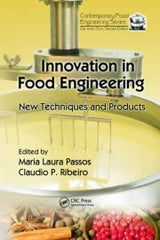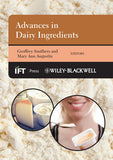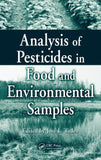Innovation in Food Engineering: New Techniques and Products by Maria Laura Passos, Claudio P. Ribeiro
SPECIAL INDIAN REPRINT
November 12, 2009 by CRC Press
Reference - 747 Pages - 174 B/W Illustrations
Features
- Highlights innovation in drying, concentration and encapsulation technologies
- Discusses biotechnology for producing natural flavors, enzymes, organic acids, and surfactants
- Examines analytical tools that can be used to distinguish between natural and synthetic products
- Contains a case study demonstrating the steps for developing a new product line
- Discusses nanotechnology as a method for modifying food composition and producing new packaging materials
- Covers biodegradable films for packaging materials that can be used in place of petrochemical polymers
- Includes coverage of functional foods such as probiotic and prebiotic dairy products
Summary
Consumer-driven products have kept the food industry at the forefront of technological innovations. For example, the redefinition of the once accepted compromise between convenience and quality is just one of the current issues driving the development of new products. An overview of a range of solutions for these challenges, Innovation in Food Engineering: New Techniques and Products addresses not only new or alternative technologies but also new products, materials, and additives that have emerged as a response to current and emerging issues faced by the food industry.
This book provides a comprehensive overview of modern processing technologies and their use to develop new or improved food products and ingredients that meet consumers increased demands for quality and safety. Each chapter in the Innovative Techniques section begins with a critical review of the fundamentals of the new or modified technique, its advantages, and relevant results. They include a description of the actual industrial scenario where the technique can be applied, emphasizing benefits and economical relevance of this sector. The chapters in the New Materials, Products, and Additives section identify the potential of the new or modified product, discuss its production route, and compare it with traditional alternatives.
While there are many books available on both topics, this is one of the first to cover processing technologies and their use to produce new and improved food products. Written by internationally recognized experts and pioneers and comprehensive in scope, the text highlights promising techniques and remaining challenges. In the constantly changing global marketplace, keeping up with new developments is important—keeping ahead of them is essential. This book keeps you up to date on the latest technology and paves the way for future developments.
Table of Contents
Innovative Techniques
Opportunities and Challenges in Nonthermal Processing of Foods, N.K. Rastogi
Trends in Breadmaking: Low and Subzero, C.M. Rosell
Biotechnological Tools to Produce Natural Flavors and Methods to Authenticate Their Origin, E. Brenna, G. Fronza, C. Fuganti, F.G. Gatti, and S. SerraApplication of Solid-State Fermentation to Food Industry, M.A. Longo and M.Á. Sanromán
Membrane Processing for the Recovery of Bioactive Compounds in Agro-Industries, S. Velizarov and J.G. Crespo
Recent Advances in Fruit-Juice Concentration Technology, C.P. Ribeiro Jr., P.L.C. Lage, and C. P. Borges
Encapsulation Technologies for Modifying Food Performance, M. Inês Ré, M.H.A. Santana, and M.A. d’Ávila
Perspectives of Fluidized Bed Coating in the Food Industry, F. Depypere, J.G. Pieters, and K. Dewettinck
Spray Drying and Its Application in Food Processing, H.L. Xin and A.S. Mujumdar
Superheated-Steam Drying Applied in Food Engineering, S. Prachayawarakorn and S. Soponronnarit
Drying of Tropical Fruit Pulps: An Alternative Spouted-Bed Process, M. de Fátima Medeiros, J.S. Souza, O.L.S. Alsina, and S.C.S. Rocha
Application of Hybrid Technology Using Microwaves for Drying and Extraction, U.S. Shivhare, V. Orsat, and G.S. Vijaya Raghavan
Vacuum Frying Technology, L.P. Fan, M. Zhang, and A.S. Mujumdar
Aseptic Packaging of Food—Basic Principles and New Developments Concerning Decontamination Methods for Packaging Materials, P. Muranyi, J. Wunderlich, and O. Franken
Controlled and Modified Atmosphere Packaging of Food Products, D. O’Beirne
Latest Developments and Future Trends in Food Packaging and Biopackaging, J.M. Lagaron and A. López-Rubio
New Materials, Products, and Additives
Biodegradable Films Based on Biopolymers for Food Industries, A.C. de Souza, C. Ditchfield, and C.C. Tadini
Goat Milk Powder Production in Small Agro-Cooperatives, U.K.L. Medeiros, M. de Fátima Medeiros, and M.L. Passos
Meat Products as Functional Foods, J. Fernández López and J.A. Pérez Alvarez
Probiotics and Prebiotics in Fermented Dairy Products, G. Vinderola, C. González de los Reyes-Gavilán, and J. Reinheimer
Uses of Whole Cereals and Cereal Components for the Development of Functional Foods, D. Charalampopoulos, S.S. Pandiella, and C. Webb
Advances in Development of Fat Replacers and Low-Fat Products, J.R. Daniel
Biosurfactants as Emerging Additives in Food Processing, D.M. Guimarães Freire, L. Vieira de Araújo, F. de Araujo Kronemberger, and M. Nitschke
Index


















